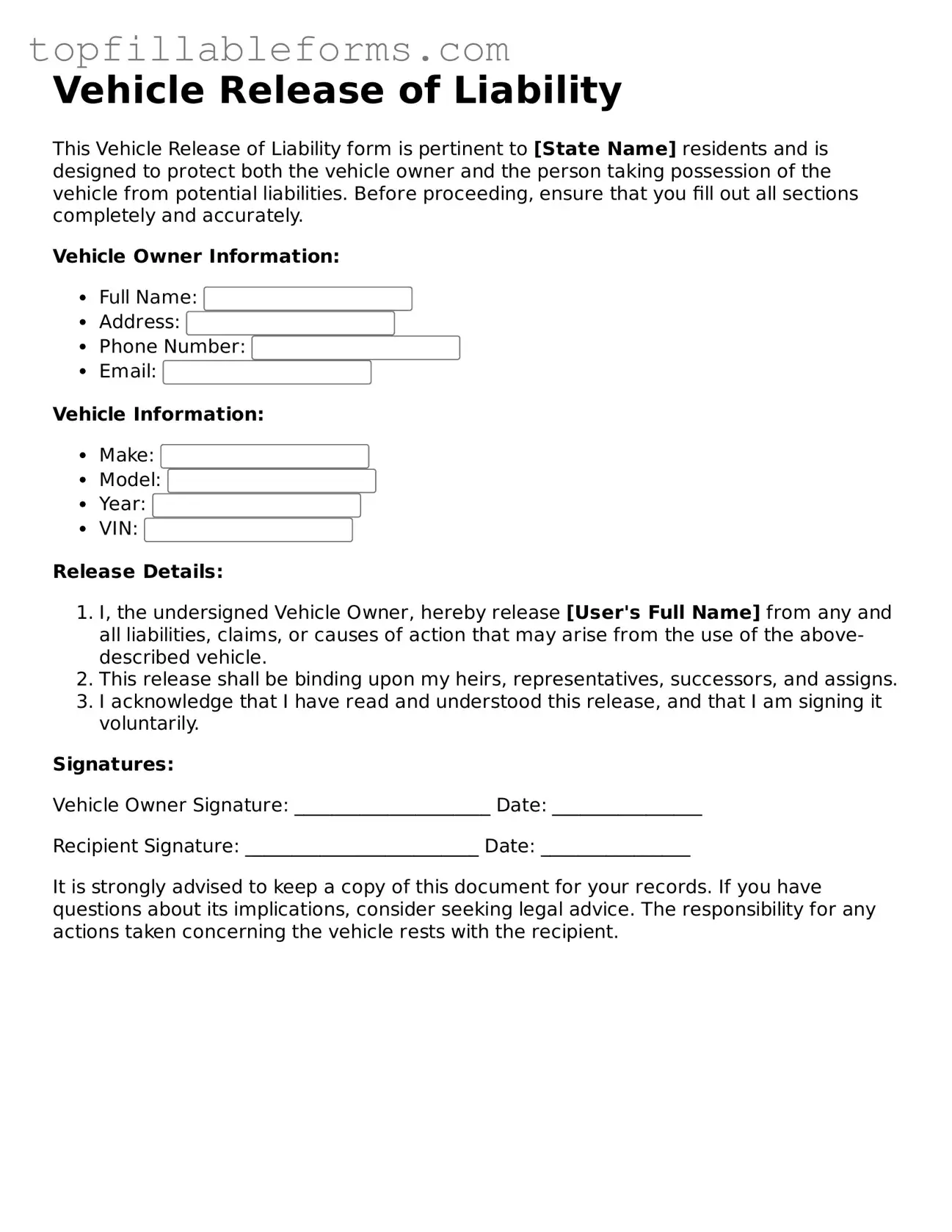Free Vehicle Release of Liability Form
The Vehicle Release of Liability form is a legal document that protects vehicle owners from future claims related to the use of their vehicle. By signing this form, individuals acknowledge that they are releasing the owner from any responsibility for accidents or damages that may occur after the vehicle has been transferred or loaned. Understanding this form is crucial for anyone involved in vehicle transactions, ensuring that both parties are clear on their rights and responsibilities.
Open Vehicle Release of Liability Editor Here
